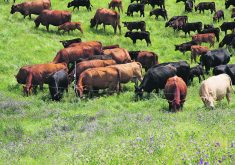A few weeks ago, a letter was published inThe Western Producer(Open Forum, Oct. 7) from someone understandably upset at planted windbreaks, mostly carragana, being destroyed in their area of the prairies.
Personally, I consider the carragana to be an invasive species here in the parklands and I heartily wish it had never been planted as it escapes and destroys hundreds of acres of native trees and shrubs to say nothing of planted trees.
However, this product of Siberia has been useful indeed on the Prairies as usually the ground on either side of the rows is cultivated and the escapees tilled under, or it is kept clipped in small plantations and not allowed to go to seed.
Read Also

Organic farmers urged to make better use of trade deals
Organic growers should be singing CUSMA’s praises, according to the Canadian Chamber of Commerce.
It’s safe to say that the carragana was instrumental in saving thousands of acres of land from blowing away and providing shelter for wildlife and humans.
However, the first thing anyone does, usually, when acquiring a piece of land, is to show others that it is theirs and they can do what they want with it. This usually means the destruction of the last tree and the last slough. When land became nothing but a commodity, it meant the land was in trouble.
The next step, of course, is known as development. That means concrete and asphalt. There are the words undeveloped, and waste land tossed about.
I can remember seeing a fine crop of wheat near a certain city alongside of which was a sign declaring that here was a desirable property for development.
It is now under concrete and asphalt. It seems the food crop was not desirable enough nor were the native trees bordering it, that rich black soil.
Well, the god out there is named big and bigger. How big is big enough?
C. Pike
Waseca, Sask.














